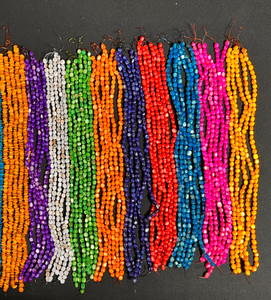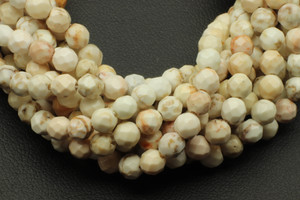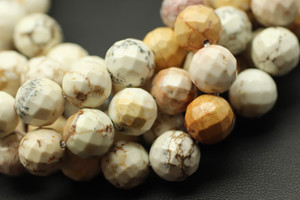
100 Strands of Magnesite, Dyed, Assorted Shapes & Sizes
8 Strands Turquoise Hearts 10mm
8 Strands Green Hearts 10mm
8 Strands Blue Hearts 10mm
6 Strands Turquoise Coins 20mm
6 Strands Turquoise Coins 12mm
6 Strands Red Coins 12mm
6 Strands Light Blue Drops 10x13mm
6 Strands Dark Blue Drops 10x13mm
6 Strands Turquoise Ovals 12x16mm
6 Strands Turquoise Ovals 14x17mm
6 Strands Turquoise Rice 10x30mm
6 Strands Green Rice 10x30mm
6 Strands Red Rice 10x30mm
10 Strands Green Barrel 10x8mm
6 Strands Red Rectangle 13x18mm
Magnesite is named for its principal component of magnesium and it is in the calcite group of minerals. Natural Magnesite is usually chalky white, but can also be found in gray, brown, yellow, orange, and pale pink and transparent, which is very rare. The natural luster of Magnesite is dull with a matte surface. When cut and polished into beads, it features a dark thread of veins or a web-like matrix across its surface, making it an attractive stone to use.
However, this is a porous stone that can be easily dyed to create bold and vibrant colors. It is often dyed to a turquoise color, because with its dark veining, it very closely resembles Turquoise. Unfortunately, some have passed off dyed Magnesite as Turquoise. Many times, it is difficult to tell the difference. The best thing is to know and trust your vendors. Magnesite and Turquoise have a difference in their hardness and Turquoise is harder. Also, if the price is too low, then it may not be turquoise. You can also look for color inconsistencies where the dye has collected in the natural cracks of the stone.
Magnesite is mined from many sources across the United States, Europe, Africa, Brazil, Australia, and China.
Hardness 3.5–5
These beads were dyed with a coloring agent into a gemstone to give it new color, intensify present color or improve color uniformity.
These beads were cut, drilled, and polished in China.















